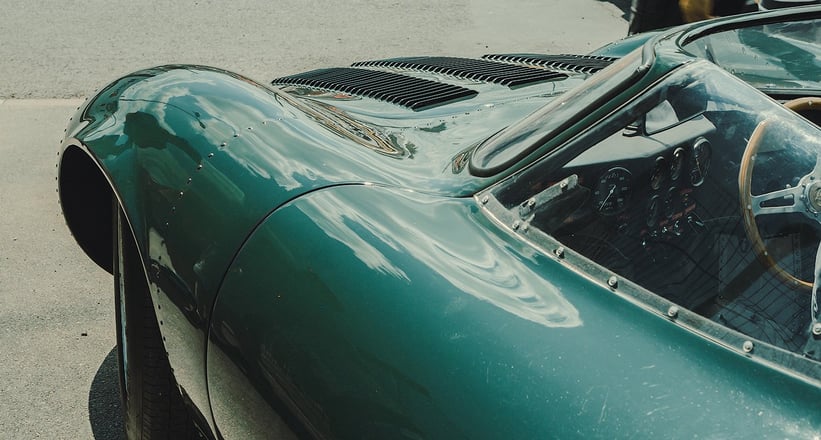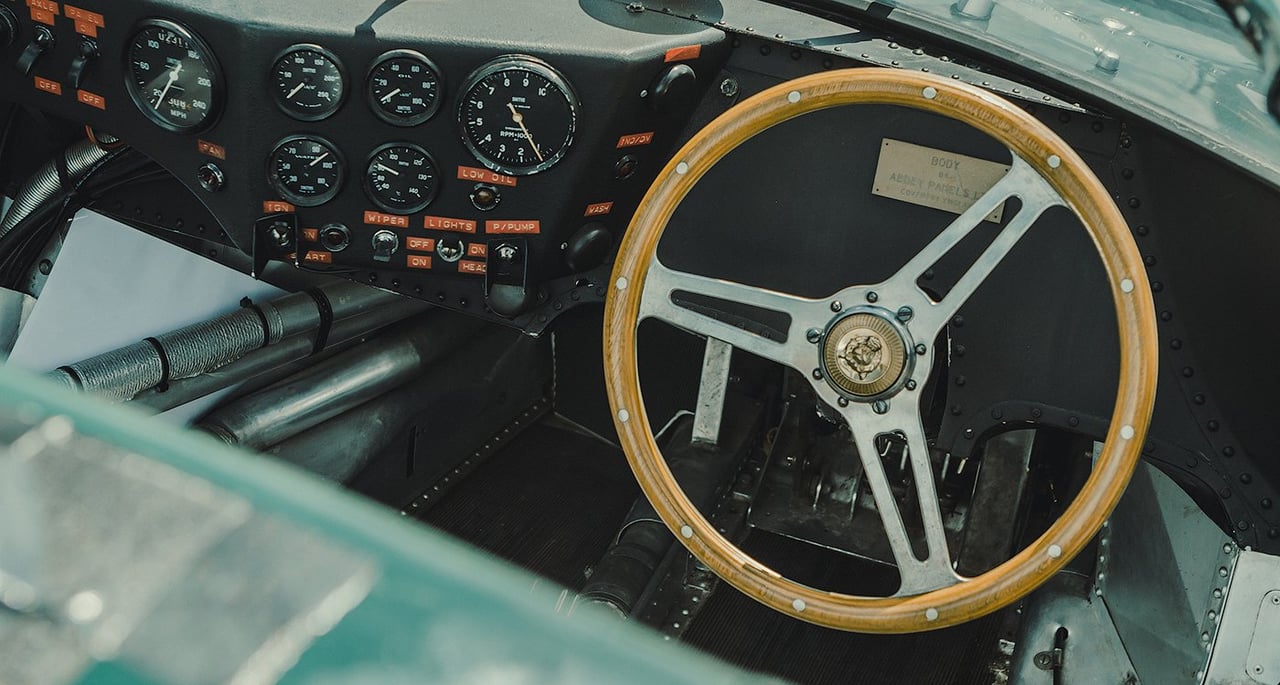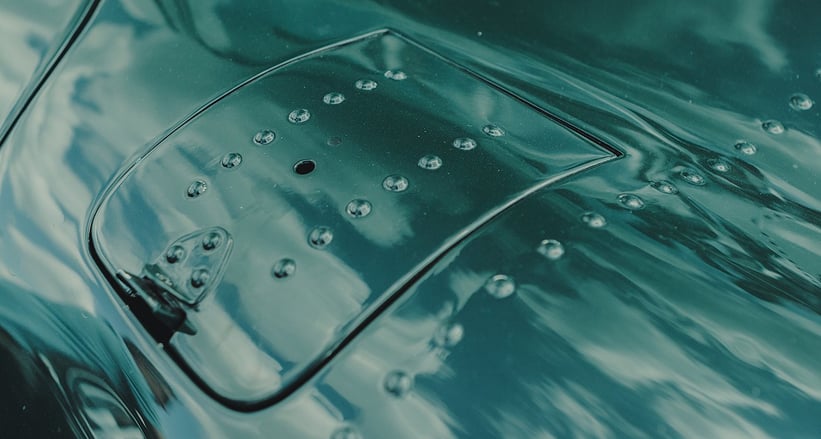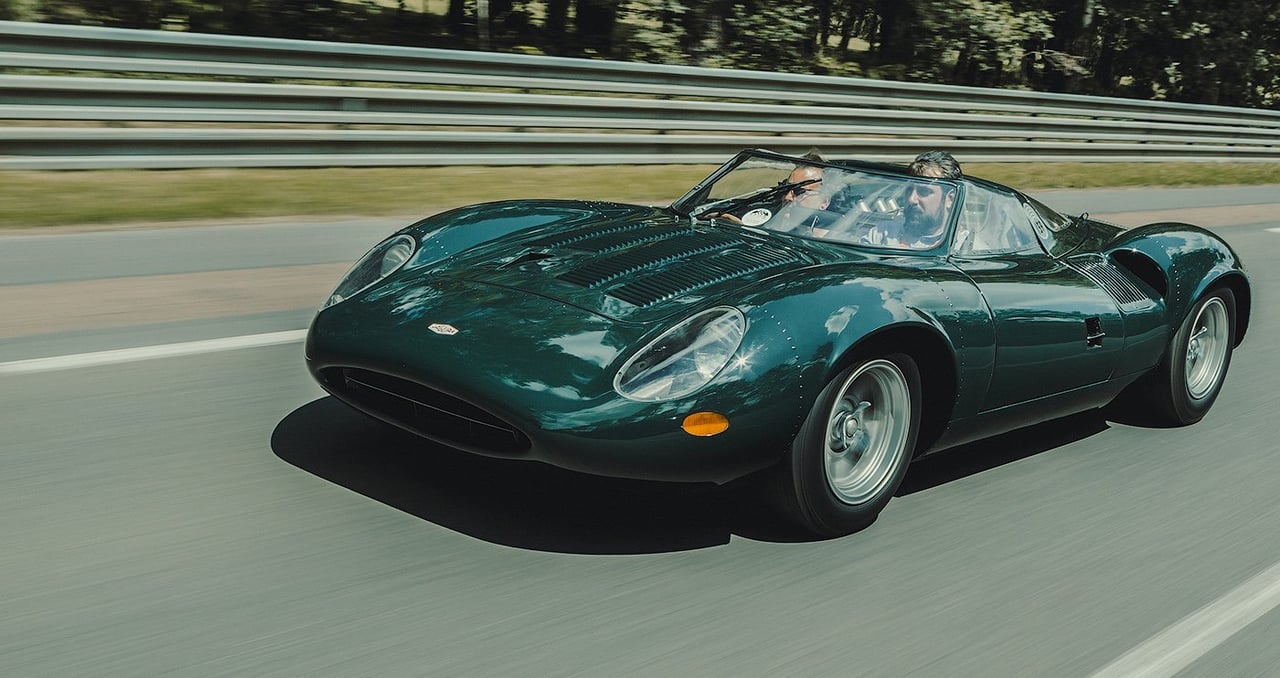Considering the Jaguar XJ13’s ill-fated intentions of competing at the Le Mans 24 Hours in the late 1960s (it was ultimately rendered a stillborn by shifting regulations), passenger comfort unsurprisingly wasn’t too high on the list of priorities. What’s more, it was designed entirely around the rather diminutive Norman Dewis so, at six feet tall, I knew it was going to be a bit of a squeeze for me. What’s more, I was told a hot pipe runs parallel with each leg, but that I wouldn’t find out just how hot until we were on the move. With a carefully choreographed photoshoot planned – not to mention 99 other Jaguars following in formation – I wouldn’t have a chance to bail once we were moving. It really was a case of ‘if you can’t stand the heat in the kitchen, don’t enter in the first place’. However, I was quite happy to sacrifice my trousers to experience the XJ13’s maiden voyage around the Circuit de la Sarthe – especially as the driver was Michael Quinn, grandson of Jaguar founder Sir William Lyons. Talk about stories for the grandchildren…
Pinch-me moment



After waiting patiently in the formation area for what felt like an eternity, the ‘go’ came with little warning and we had just seconds to jump in and contort ourselves into the positions in which we would remain for the next ten minutes or so. Quinn fired the engine into life, and the cockpit was instantly transformed from a sweltering yet eerily serene greenhouse into a V12 amphitheater. Quinn eased the dogleg gearbox into first and built towards the cruising speed required for the photoshoot, and we were flanked expertly by a Silk Cut XJR-9 until the first chicane – although you would never have known it from the lack of Group C noise that made it into our cabin. Thereafter, the pack was set loose, and Quinn was able stretch the XJ13’s legs despite his strict instructions to be gentle and, perhaps more effective, the 4,000rpm rev limiter. In its day, there would have been another 6,000rpm to play with, but this was the original fifty-year-old developmental engine so, understandably, risk had to minimised.
Humbling experience



Watching Quinn navigate each of the circuit’s iconic corners was a humbling experience. As we touched 100mph on the Mulsanne straight, with my exposed forehead being pummeled by cold air and the rest of my body slowly cooking inside the cauldron, I couldn’t help but think what might have been. This car was developed by the same men who created the triple Le Mans-winning D-type, and it held the unofficial lap record at Silverstone for numerous years until it was unseated by the McLaren F1, no less. On the flip side, I also imagined the outcome if Jaguar had decided it was too costly to salvage the obsolete car after Dewis’ famous accident in 1971, and decided I would spend the rest of my experience appreciating the happy medium.
The battle scar

Due to the performance handicap, we had been overtaken by a lot of more modern machinery by the end of our lap, which meant there was already a rather long queue on the circuit’s notoriously congested infield roads – the last thing the pilot of a priceless racing car that struggles with low-speed cooling wants to see. It was here that Quinn’s driving experience was really called upon, and he speedily worked his way through traffic and past surprised onlookers with aplomb before the temperature needles neared the danger zone, and there was no other choice but to power down – across the sole entrance to the circuit’s ambulance station, no less. For most people suspecting they might have a burn developing on their leg, this would probably seem like a godsend. But as we escaped for air and let the car tick cool, I began to hope that I would be left with a soft-tissue reminder. After all, what better way to mark such an encounter than with a battle scar?
Photos: Peter Aylward for Classic Driver © 2016 / Jaguar












